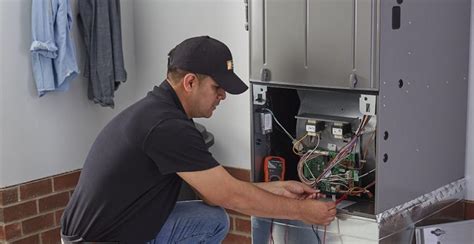Got Aircon Emergency?
Call Us: 613-922-2836

Hey there! Ever wondered when a furnace issue crosses the line from a minor hiccup to a full-blown emergency? It’s like knowing the difference between a car’s ‘check engine’ light and a flat tire on the highway. Some furnace problems need immediate attention to ensure your safety and comfort. Let’s uncover what counts as a furnace emergency.
A furnace emergency isn’t just about discomfort in chilly weather. It can pose serious risks, similar to driving a car with critical mechanical failures.
Carbon monoxide leaks are the silent assassins of furnace issues. If your carbon monoxide detector goes off, it’s like seeing smoke in your house – a clear and present danger.
Evacuate your home immediately and call professionals. It’s as urgent as calling 911 for a fire.
A gas leak can be identified by a sulfuric or “rotten egg” smell. It’s the furnace equivalent of smelling gasoline in your car – a sign to stop and seek help.
Don’t operate any electrical switches and evacuate immediately. Call for emergency services from a safe distance.
If your furnace stops working during a severe cold snap, it’s like your car breaking down in the middle of nowhere. The risk of freezing temperatures indoors can be a health hazard.
While waiting for help, use alternative heating methods safely and avoid any actions that could exacerbate the situation.
Unusual loud noises from your furnace, like banging or screeching, can be alarming. It’s akin to hearing loud, strange noises from your car engine.
These noises can indicate serious problems that might lead to system failure or safety risks.
If your furnace is causing electrical issues in your home, like flickering lights or tripping the circuit breaker, it’s as serious as electrical problems in your car.
Electrical issues in a furnace can pose fire risks. Immediate professional intervention is necessary.
Regular maintenance can prevent many emergencies. It’s like taking your car for its annual service to catch problems early.
Simple checks like listening for strange noises or replacing the filter can be your first line of defense, akin to checking your car’s oil level.
For most homeowners, assessing the severity of a furnace problem can be challenging. When in doubt, it’s better to err on the side of caution and call a professional. It’s like taking your car to a mechanic when you’re unsure about a problem.
In conclusion, recognizing a furnace emergency is crucial for your safety and well-being. Carbon monoxide leaks, gas leaks, loss of heat during extreme cold, unusual loud noises, and electrical issues are all signs that you need immediate professional help. Regular maintenance can prevent many of these emergencies, but when they do occur, it’s essential to act fast. Remember, a well-maintained furnace not only keeps your home cozy but also ensures the safety of everyone inside. Stay warm, stay safe, and don’t hesitate to call in the experts when you suspect a furnace emergency!
| M | T | W | T | F | S | S |
|---|---|---|---|---|---|---|
| 1 | 2 | 3 | 4 | 5 | 6 | 7 |
| 8 | 9 | 10 | 11 | 12 | 13 | 14 |
| 15 | 16 | 17 | 18 | 19 | 20 | 21 |
| 22 | 23 | 24 | 25 | 26 | 27 | 28 |
| 29 | 30 | |||||